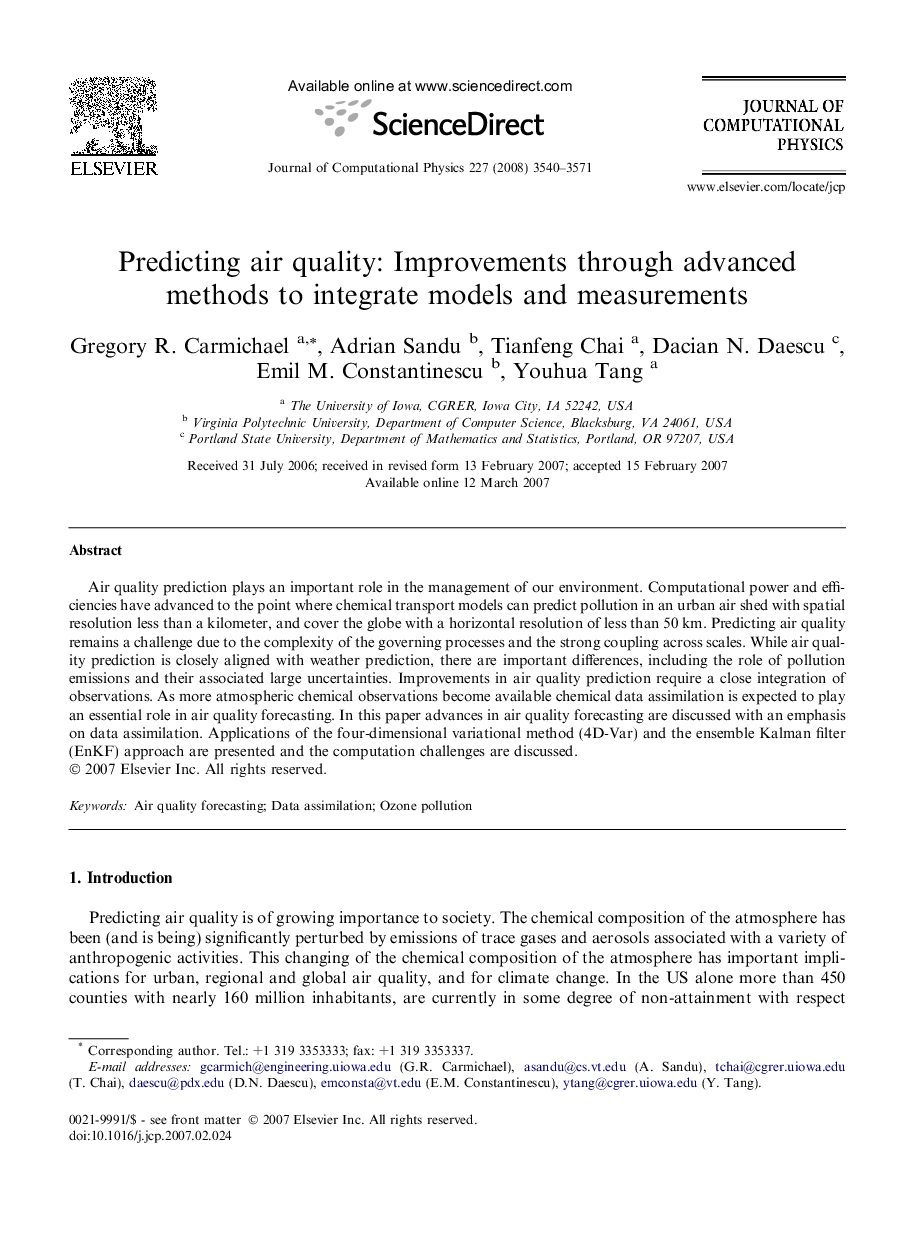| Article ID | Journal | Published Year | Pages | File Type |
|---|---|---|---|---|
| 522824 | Journal of Computational Physics | 2008 | 32 Pages |
Air quality prediction plays an important role in the management of our environment. Computational power and efficiencies have advanced to the point where chemical transport models can predict pollution in an urban air shed with spatial resolution less than a kilometer, and cover the globe with a horizontal resolution of less than 50 km. Predicting air quality remains a challenge due to the complexity of the governing processes and the strong coupling across scales. While air quality prediction is closely aligned with weather prediction, there are important differences, including the role of pollution emissions and their associated large uncertainties. Improvements in air quality prediction require a close integration of observations. As more atmospheric chemical observations become available chemical data assimilation is expected to play an essential role in air quality forecasting. In this paper advances in air quality forecasting are discussed with an emphasis on data assimilation. Applications of the four-dimensional variational method (4D-Var) and the ensemble Kalman filter (EnKF) approach are presented and the computation challenges are discussed.
